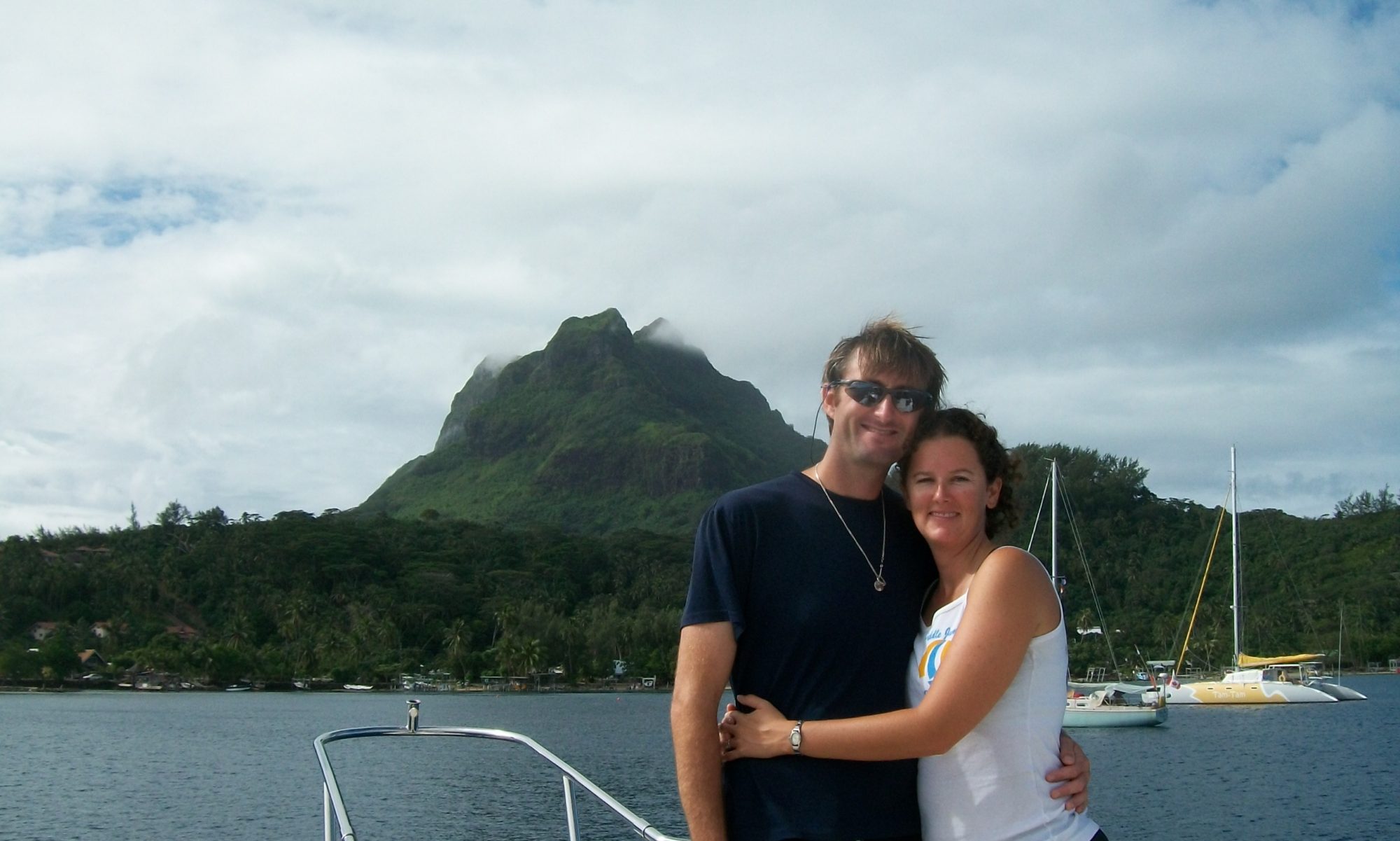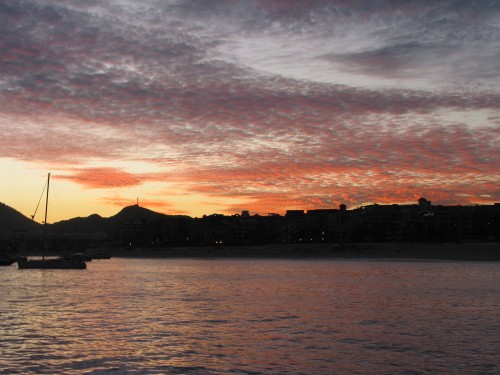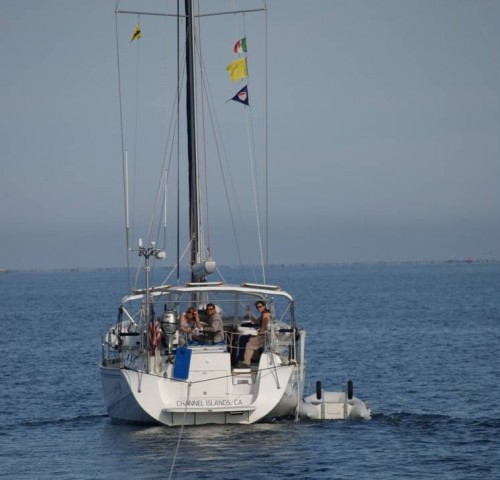Up until now we have been talking about a successive series of experiences to build up your sailing experience before taking “the big leap”. We talked about how to test out sailing, how to build experience in your local area and how to work your way up to costal cruising. Now we want to make it clear that there are a lot of people spend their entire sailing lives doing costal cruising and are quite happy, with good reason. We know sailors who have spent the past 5 years doing nothing more than exploring the Pacific Coast of Mexico and have new experiences each and every day. Using that as a base, how long you reckon it would take to explore the entire cost of North and South America? Ok, now after that you can hit up the Caribbean, the Mediterranean, and with a flight or two, South East Asia and Australia. Overall, it’d take a while. There are plenty of adventures to be had and cultures to be explored in costal cruising because, well, there is a lot of coast out there.
But then, there’s a lot of ocean out there as well…and that’s the rub. Yes, there are many places you can explore with costal cruising but there also a couple of good sized seas and, of course, two oceans. Two very big oceans…
and way out there in the deep, that’s the domain of the bluewater cruisers
Blue water cruising:
This is the cool sounding stuff where you are able to say for the rest of your life: “New Zealand? Yeah, I sailed there” or “Bora Bora? It’s alright but Fakarava has better diving.” Stuff that turns heads at parties and converts those asking questions for the sake of polite conversation into people that are genuinely interested in your story.
Blue water cruisers are the ships that are willing to be completely alone at sea hundreds of miles from land for weeks at a time in order to explore the isolated islands and remote places that no one ever gets to see without dropping at least $5,000 in airfare for coach seats..and the rooms ain’t a bargin either. That’s assuming it’s even possible to fly there.
Advantages
- Remote locations – We have been to places, to entire countries we never knew existed before. We have been to islands that literally less than 100 people had set foot on in the past 12 months. Desert island with the palm tree? Got the photo.
- Long gigs – Due to the fact that bluewater cruisers go long distances to locations that are difficult to get to by conventional means, they tend to take on crew for longer periods of time. We worked with two boats during our 6 months in the South Pacific, one for 4 months and the other for 2 with an offer to stay on longer if we wanted. As long as everyone gets along, having a reliable living arrangement for a few months is a big plus.
- Go anywhere – There are no limits to how far you can go because most of the world is connected by water. As long as you have the time to dedicate to the transit, are willing to take the slow round-about path and can find a boat going your way, there really are very few constraints on where bluewater cruisers can take you.
Disadvantages
- Facing the weather – When you’re 600 miles from shore there is simply no where to duck into if you want to avoid a storm. Bluewater cruisers have to be able to ride out whatever Neptune decides to throw their way. The advent of predicting global weather patterns, limited shipboard HF radio email and the weatherfax system mitigate this risk by allowing sailors to see what’s coming but in the end it’s you and your ship against the sea.
- Long transits – Our longest transit was 22 days from Mexico to the Marquesas. A normal transit between island nations was closer to 5 straight days. Now that doesn’t sound too bad but remember we were trapped inside a 400 sq ft apartment with 4 people we had no way of avoiding. We could not leave, we did not have cable and we could not order pizza.
We loved it and if you’re well prepared, have the right disposition and good people to sail with you will too. As Greg said previously, in addition to reading most of the bible and studying French on his computer every day, he also learned to play the ukulele from scratch on the trip because he had the time to play every day. It should be noted however he was asked to stop playing onboard after about 2 straight months of self-teaching. While his shipmates agreed Greg had become a decent hand at the uke, they said they can only hear the same 8 songs so many times.
(in his defense, Greg has added a few Christmas carols to his playlist since then)
- Less ships – Bluewater cruisers are a fairly small group, which is part of the attraction. Downside to this though is that once you’re out there all remote and whatnot meeting a lot of new ships will be difficult as
a) there just aren’t a lot of them and
b) they are all looking to be “remote” as in, not really near each other.
- Airfare ain’t cheap – One of the reasons bluewater cruisers keep the crew they have is that getting new ones is hard. A remote desert island in the middle of nowhere sounds amazing but remember that if get off your boat you’re…on a small desert island in the middle of nowhere. In Niue, that means ponying up for a hotel room until the day the one flight a week comes in to fly to Auckland…which is the one and only place in the world you can fly to from Niue.
- Far from help – This specter has a lot more bark than bite. It is incontestable though that by bluewater cruising you are obviously increasing the difficulty of getting medical attention. Are you literally hundreds of miles from the nearest hospital and if you decide to have a massive heart attack or appendicitis are you in a lot of trouble? Yes, that’s true. But before you think that a broken leg = death out there consider a few things –
a) Between the all important EPIRBS, Sat phones, HF radio, VHF radio, buddy boats, sailing blogs that auto update with position reports and radio nets there are a lot of ways for people to keep tabs on you or for a boat in distress to get the word out.
b) There are rescue systems in place to protect mariners and the US Coast Guard is not afraid to divert a merchant ship in the area if it becomes necessary.
c) Proper bluewater cruisers should be carrying very robust medical kits and, again thanks to the USCG, there are doctors on call to advise mariners in an actual emergency via radio or sat phone. In really extreme situations the US Air Force has dropped in para-rescue teams to stabilize the patient. Naturally, that doesn’t happen for a toothache.
So the truth is that, as long as your ship has taken the proper precautions, you’re far safer out there than what might first appear. What this means is that “distance from help” is a major disadvantage that, with proper preparation and equipment can be reduced to a minor one that would only take effect in the most extreme circumstances. However nothing can change the fact that there are 500 miles of open water between you and the nearest medical facility. You’ll want to plan for that.
The decision between bluewater and costal cruising is not always an easy one. Coastal cruising has a lot to offer and can keep you happy for a lifetime while not risking your neck just to spend 22 days getting tossed around inside some glorified “bedsheet powered bathtub” to see an island that looks suspiciously like the ones you can find off the coast of Mexico or Thailand. Bluewater cruisers take on some increased risk and give up the ability to pull in & relax as often in order to have what amounts to truly epic life experiences exploring some of the parts of the world that very few people have ever seen. Neither is wrong, in fact both are quite right. It all depends on what you are looking for out of your cruising experience.
Either way we recommend that after you’ve tested the water, you start with costal cruising. You’ll have more opportunities to meet more sailors, see more exotic locals in less time and most importantly, you’ll get to try out some shorter passages closer to land before deciding to make a bluewater jump. If after a few hops you still hear the call of the sea and really want to know what a baguettes and fresh mangoes taste like, then go for it!
Return to how to crew main page
Greg and Tiffany are traveling around the world on sailing yachts and keep a video blog of their (mis)adventures. If sailing to Tahiti on a 44 ft sailboat, 3-day delays for wine tastings, getting pooped on by seagulls, opening coconuts with dull machetes, sailing past tornadoes and ukulele Christmas carols are for you, then check them out at www.CoastGuardCouple.com!






Bad weather is just the only thing I hate when I am doing a sea travel cos there’s no way to avoid storms.
Anyway, nice photos there.
I love that sunrise….
Thanks Wenie! I agree, bad weather is never fun out at sea… I don’t get seasick, but that doesn’t make it an easy ride!